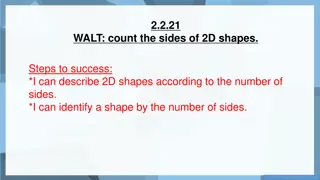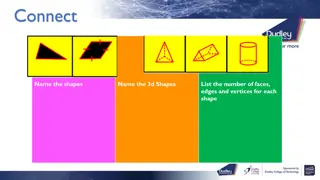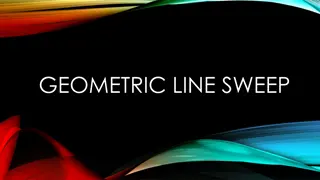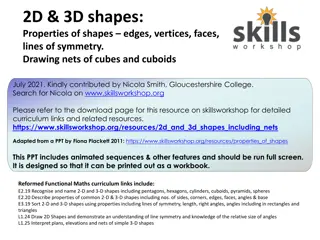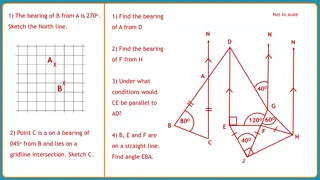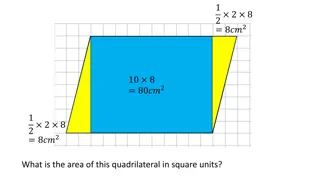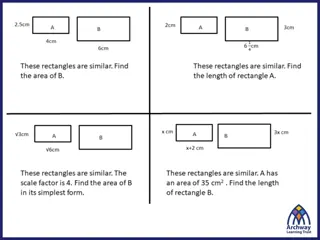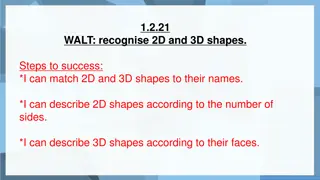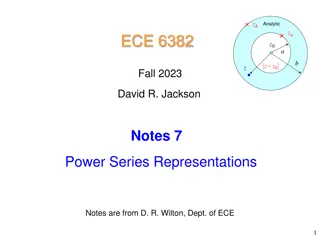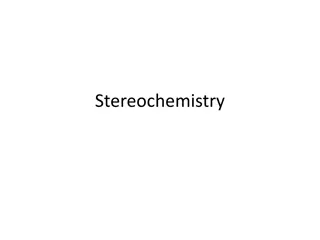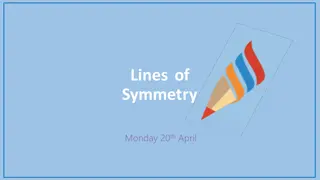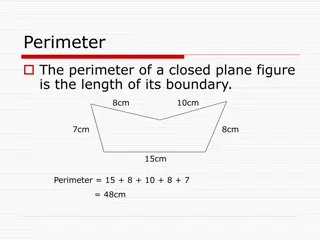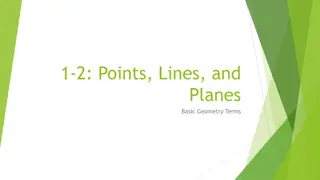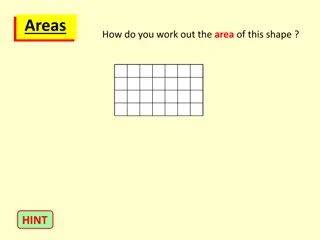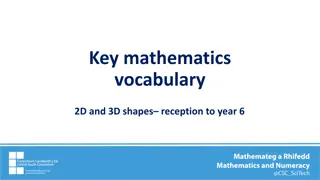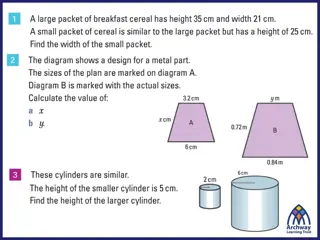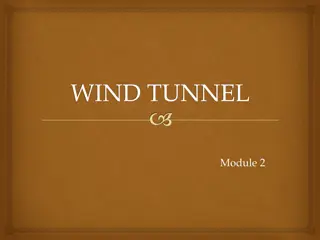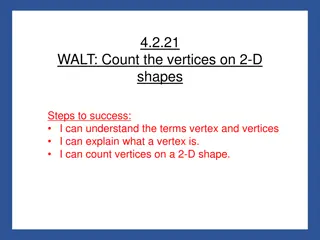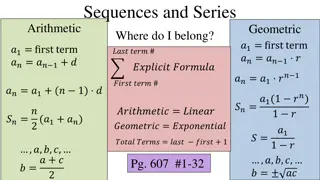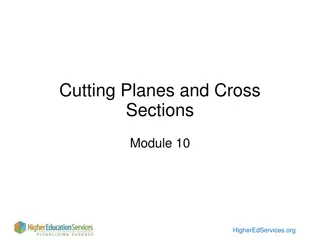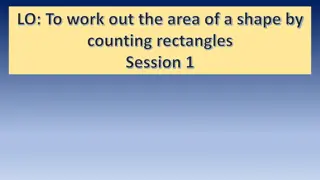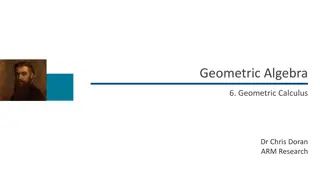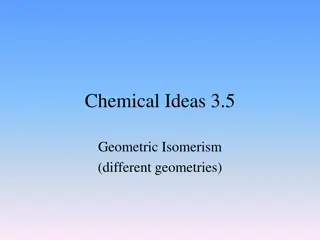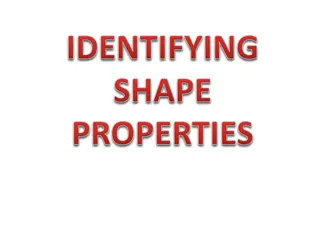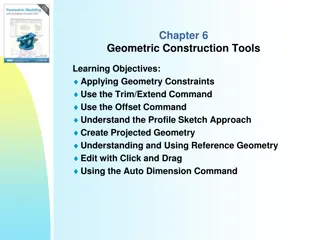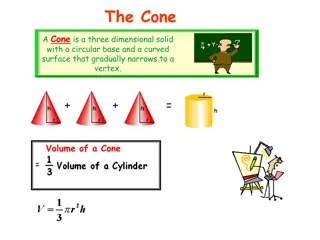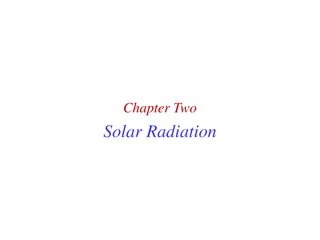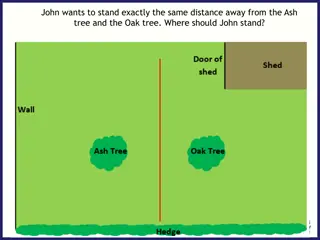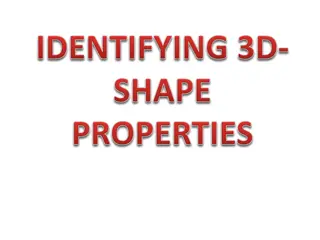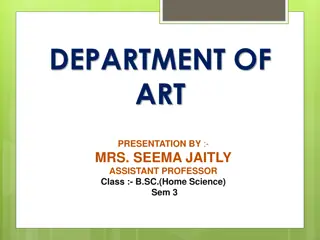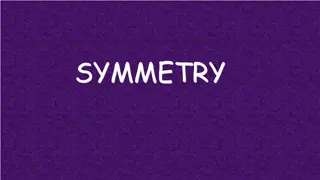Understanding Geometric Shapes through Visualization in Mathematics for Class 7
Explore the concept of visualising solids in mathematics for Class 7 students. Learn to associate 2D drawings with 3D shapes, visualize various solids, identify their properties, and develop skills in drawing sketches. The chapter covers learning objectives, recapitulation of shapes around us, introduction to 3D shapes, understanding shapes in geometry, and more.
Download Presentation

Please find below an Image/Link to download the presentation.
The content on the website is provided AS IS for your information and personal use only. It may not be sold, licensed, or shared on other websites without obtaining consent from the author. Download presentation by click this link. If you encounter any issues during the download, it is possible that the publisher has removed the file from their server.
E N D
Presentation Transcript
SUBJECT- MATHEMATICS CLASS-VII Topic- VISUALISING SOLIDS
PDF CHAPTER LINK TO VIEW PDF OF VISUALISING SOLIDS Click here
LEARNING OBJECTIVES In this chapter Students will be able to: Associate two dimensional drawings with three dimensional shapes. Visualise pyramid ,tetrahedron ,cylinder from two dimensional drawings. Determine the number of faces, edges ,and vertices of a given solid Analyse the characteristics and properties of two and three dimensional geometric shape and understanding their geometrical relationship. Define basic properties of triangle, rectangle , cube, and cuboids. Identify the nets of cube, cuboid and cone. Identify a solid is represented by a net. Determine whether a figure can be net of a given solid. Determine whether a solid can be formed from a given net. Learn the art of drawing the oblique sketch of a solid .(Cube/Cuboid) Learn art of drawing the isometric sketch of a solid .(Cube/Cuboid)
RECAPITULATION In our surroundings there are full of objects and the objects having different geometrical shapes. Let us focus on some objects that we see around the home and outside which are having different colours, shapes and sizes. Here are the pictures of some objects .Can you guess the names of these objects ? Can you tell the geometrical name of these objects ?
INTRODUCTION Rahul, Raj and Sahil are good friends from their childhood. One day on the occasion of Sahil s birthday, Rahul and Raj were invited to his house. Rahul and Raj had reached Sahil s house in the evening with their birthday gifts. Sahil was very happy to see his friends and after that all together they celebrated his birthday. On the next day, Sahil and his father opened the gifts and they found gifts of different shapes . Sahil asked to his father about the shapes of the gifts which were given by his friends. Sahil s father answered him that the shape of the gifts were cuboid, cube, cone, cylinder and sphere which were of 3-D shapes. Regarding the 3-D shapes, Sahil was not having any idea for which he asked his father to explain him about the 3-D shapes. Then sahil s father explained him every thing starting with 2-D shapes.
WHAT ARE SHAPES Shapes are the forms of an object or its external boundary, outline or external surface as opposed to other properties such as colours, textures or material types. In geometry, a shape can be defined as the form of an object or its outline, outer boundary or outer surface. Everything that we see in the world around us, is in a shape. We find different basic shapes such as 2 dimensional shape (square , rectangle and oval) or 3 dimensional shape (cube , cuboid , cone , cylinder and sphere)
TWO DIMENSIONAL SHAPES Two dimensional shapes are flat plain geometrical shapes and their sides are made of straight or curved lines. They can have any number of sides. Example : triangle, rectangle, square etc. Here s a list of 2-D or two-dimensional shapes with their names and figures Name of the shape Picture of the shape Circle Triangle Rectangle Parallelogram Rhombus Trapezium
3-DIMENSIONAL SHAPES Three dimensional shapes are solid figure or an object or a shape that has three dimensions length , width and height. Example : Cube ,Cuboid, Cone ,Cylinder and Sphere. Examples of 3-D objects are pencil box, Geometry box, Eraser, Dice, Orange, Water Pipe, Birthday cap etc. Here s a list of 3-D or two-dimensional shapes with their names and pictures Name of the shape Picture of the shape CUBOID CUBE CONE CYLINDER
ART INTEGRATION METHOD TO VISUALISE SOLID Math and art go together like peanut butter and jelly! ACTIVITY : (Visualisation of 3-D shapes pyramid using dance choreography.) Students pair with one another and will join by their hands. Once the music starts (solid holds solid tightly, liquid comes closer to liquid and gas join hands with gas ). Then students will dance and sing together until the music stops. When the music stops, students will form a shape as shown in the above figure for a stipulated period of time. There after some students will identify the shape. Other students will explore faces, edges and vertices of the formed shape.
FACES OF A SOLID face A face is a flat surface that forms the part of the boundary of a solid object. Each flat surface is called a face. A cuboid has 6 faces such as AEFB,BCGF,CGHD,DAEH,ADCB and GHEF
EDGES OF A SOLID EDGE An edge is a line segment at which two faces of the solid meet. A cuboid has12 edges . The edges are AB, BC, CD, AD, AE, EH, DH, EF, GF, GH, CG, BF
VERTICES OF A SOLID VERTICES Vertices is a point at which the edges meet. A cuboid has 8 vertices such as A,B,C,D,E,F,G and H
EXAMPLES Find the number of faces ,edges & vertices of a tetrahedron Solution: In a tetrahedron Faces=4 (all the faces are triangular shape) The faces are ABC, BDC, ADC, ABD Edges=6 The edges are AB, BC, AC, AD, CD, BD Vertices=4 The vertices are A, B, C, D Find the number of faces ,edges & vertices of a square shaped pyramid A D C B A Solution: In a square shaped pyramid Faces=5 (1 square shaped base and 4 triangular faces ) The faces are BCDE,AED,ADC,ABC and ABE Edges=8 The edges are AB,AC,AD,AE,BC,CD,DE and EB Vertices=5 The vertices are A,B,C,D and E E B D C
NETS FOR 3-D SHAPES A geometrical net is a 2-dimensional shape that can be folded to form a 3-dimensional shape. or A net is a pattern that is made when the surface of 3-dimensional figure is laid out flat showing each face of the figure. or A net is an outline(plane) which can be folded to make a solid. A solid can have more than one nets. NET OF A CUBE
NET OF A CONE NET OF A CYLINDER
WORKSHEET Question 1: Identify the nets which can be used to make the cubes (cut out copies of the nets and try it): (3 Marks) Answer: (i) The given net can be folded as follows: ( Mark) When the faces that are in the sky blue colour and in pink colour are folded to make a cube, they will be overlapping each other.
(ii)The given net can be folded as cube ( Marks) because it can be folded as below (iii) The given net can be folded as follows: ( Marks) A cube can thus be formed in the above way. (iv) The given net can be folded as follows: ( Marks) A cube can thus be formed in the above way. (v)The given net can be folded as follows: ( Marks) When the faces that are in the blue colour and in red colour are folded to make a cube, they will be overlapping each other.
(vi)The given net can be folded as follows: ( Marks) A cube can thus be formed in the above way. Question 2: A die is a cube with dots on each face. Opposite faces of a die always have a total of seven dots on them Here are two nets to make dice (cubes); the numbers inserted in each square indicate the number of dots in that box. Insert suitable numbers in the blanks, remembering that the number on the opposite faces should total to 7.(2 marks)
Solution: (i) The number can be inserted as follows so as to make the given net into a net of a dice. ( 1 Marks) It can be observed that the sum of the opposite faces is 7 (ii) The number can be inserted as follows so as to make the given net into a net of a dice. ( 1 Marks) Question 3: Can this be a net for a die? Explain your answer. (2 Marks) Answer: No, this cannot be a net for a die. Because one pair of opposite faces will have 1 and 4 on them and another pair of opposite faces will have 3 and 6 on them whose total is not equal to 7. ( 1 Marks) ( 1 Marks)
OBLIQUE SKETCH The oblique sketch is an pictorial representation of a solid in which the diagram intended to depict the perspective of the solid in three dimensions . STEPS TO DRAW THE OBLIQUE SKETCH OF A SOLID STEP-1 Take a squared paper Step-2 Draw the front face of the solid using the given dimensions . STEP-3 Draw the opposite face having the same size in the left of faces in step-2 STEP-4 Join the corresponding corners . STEP-5 Redraw the hidden edges
Solution: Sketch a cube (oblique) of size ? ? ? on a squared paper mark STEP-1 Take a squared paper mark STEP-2 Draw the front edge STEP-3 Draw the opposite face having the same size in the left of faces in step-2 1 mark
STEP-4 join the corresponding corners mark STEP-5 Redraw the hidden edges using blue lines mark
ISOMETRIC SKETCH OF A SOLID The term Isometriccomes from the Greek for having equal measurement . isometric may mean : Drawing a pictorial representation of a solid in which all the three dimensions are drawn at the full scale. It looks like a isometric projection in this case all the lines parallel to its measure axes are measurable. Characteristic of isometric sketch (1)The meaning of isometric is having equal measurement or dimensions . (2) In an isometric sketch ,the image of the object is drawn in such a manner that the original dimensions of the object is intact irrespective of its position. Uses of Isometric sketch: This kind of sketching is often used by illustrators , Engineers that specialise in technical drawings. Rules for Isometric Sketching Some of the rules for the isometric sketching are as follows: (1)We know that an isometric object can be drawn using vertical lines and horizontal lines. In the isometric drawing, the vertical lines will stay vertically whereas the horizontal lines are drawn at an angle of 30-degree to the horizontal plane. (2)The angle between all the three axes of the coordinate plane must be equal to 120 degrees. If you follow rule 1, then rule 2 can be automatically achieved. The isometric projection displays the three faces of an object, and they all are uniformly foreshortened.
ISOMETRIC SKETCHING Example: Draw the isometric sketch for a cuboid of dimensions ? ? ? . In order to draw the isometric sketch of a cuboid follow the below steps given . 1. To draw an isometric sketch of a cuboid with dimension 8 3 3, take an isometric dot paper as shown below: 2. To draw the front face, join 8 dots to form the length of the cuboid and 3 adjacent dots to form its breadth as shown:
3.From the corners of the rectangle drawn above, draw 4 parallel line segments as shown below: 4.Join the corners of the image together as shown below:
5.According to the convention redraw the hidden edges as dotted lines as shown:
LEARNING OUT COMES The students will be able to: Differentiate 2-D figure and 3-D object . Find Faces, Edges, Vertices of 3-D shapes. Draw nets of building 3-D shapes. Understand the different nets of a cube and its associate problems. Understand how to draw the oblique sketch and isometric sketch of a cube and Cuboid. Associate two dimensional drawings with three dimensional solids. View different sections of the solids in different ways. Draw the top /side / bottom view of a solid.


